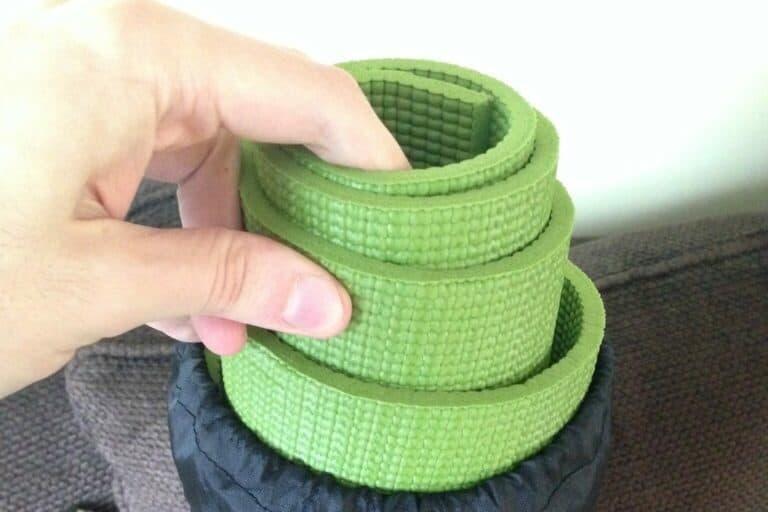How to choose the right yoga mat?

The content on this blog may contain affiliate links. If you choose to purchase through these links, I may receive a commission at no extra cost to you. Thank you for supporting my work!
So, how do you choose the right yoga mat? Knowing that the right yoga mat can make a big difference in your yoga practice. A good yoga mat can provide cushioning, grip, and stability, while also supporting your alignment and comfort. However, with so many different types of yoga mats available, it can be overwhelming to know where to start. Here are some factors to consider when choosing a yoga mat.
Thickness
The thickness of a yoga mat can affect how comfortable it is to practice on. Generally, standard yoga mats are around 3-5mm thick, which is suitable for most styles of yoga. If you prefer extra cushioning and support, you might consider a mat that is 6mm or more in thickness. However, if you practice a style of yoga that requires stability and balance, such as Ashtanga or Vinyasa, you may prefer a thinner mat (around 3mm) to provide a more stable base for your practice. This post tells goes deeper on finding the right thickness of your yoga mat.
Material
Yoga mats are made from a variety of different materials, each with their own benefits and drawbacks. Some common yoga mat materials include:
- PVC: PVC is a synthetic material that is commonly used in yoga mats. PVC mats are durable, affordable, and provide good grip. However, they are not environmentally friendly and can be toxic to both the environment and our health.
- Natural rubber: Natural rubber is a sustainable and biodegradable material that is made from the sap of rubber trees. Natural rubber mats provide excellent grip and cushioning, but they can be heavy and may have a strong odor.
- Cork: Cork is a renewable and recyclable material that is harvested from the bark of cork oak trees. Cork yoga mats are naturally antimicrobial, durable, and provide good grip.
- Jute: Jute is a natural fiber that is biodegradable, renewable, and recyclable. Jute yoga mats provide good grip, are lightweight, and have a natural texture that can be helpful for certain yoga poses.
- Organic cotton: Organic cotton is a sustainable and biodegradable material that is grown without the use of harmful pesticides or fertilizers. Cotton yoga mats provide a natural and comfortable surface for yoga practice.
Follow this link to explore deeper into what yoga mats are made of.
Grip
Grip is an important factor to consider when choosing a yoga mat, as it can affect your stability and safety during practice. Look for a mat with a non-slip surface that provides good grip, even when wet with sweat.
Size
Yoga mats come in a variety of sizes, so it’s important to choose a mat that will fit your body comfortably. Standard yoga mats are around 68 inches long and 24 inches wide, but you may prefer a longer or wider mat if you are taller or prefer more space to move.
Price
Yoga mats can range in price from very affordable to quite expensive. While it’s tempting to go for the cheapest option, keep in mind that a good yoga mat is an investment in your practice. Look for a mat that is durable, comfortable, and suits your needs and preferences, even if it means spending a bit more.
Concluding on choosing the right yoga mat
Choosing the right yoga mat is an important part of your yoga practice. Consider factors such as thickness, material, grip, size, and price when choosing a mat that will support your practice and help you to achieve your yoga goals.

Read more
Explore deeper into the various aspects to consider when choosing a yoga mat. The following articles goes deeper into the factors listed above:






